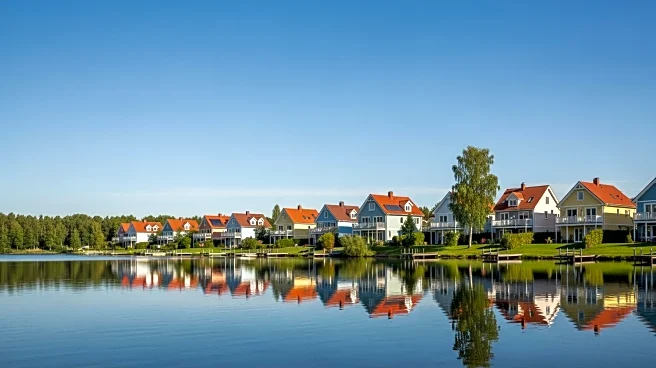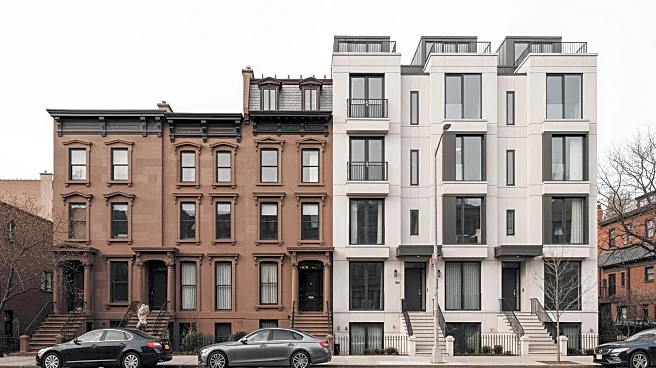What's Happening?
Recent data from Realtor.com indicates a significant interest in Cumberland homes from residents of major metropolitan areas. The scarcity of homes on the market nationwide, which remains below pre-pandemic
levels, has kept prices elevated despite a slowdown in sales over the past year. This has led to an increase in online house hunting, with 97% of homebuyers utilizing online platforms according to a 2021 National Association of Realtors report. The cross-market demand data from Q3 2025 shows that Washington, DC leads the interest with a view share of 29.8%, followed by New York, NY at 11.8%, and Baltimore, MD at 9.9%. Other cities showing interest include Hagerstown, MD, Pittsburgh, PA, and Philadelphia, PA.
Why It's Important?
The heightened interest in Cumberland homes from major metros underscores the ongoing challenges in the U.S. housing market, particularly the imbalance between supply and demand. As home prices remain high, potential buyers from densely populated areas are exploring options in less crowded regions like Cumberland. This trend could lead to increased competition and further price hikes in these areas, impacting local residents and potentially altering the demographic and economic landscape. The reliance on online platforms for house hunting also highlights the shift in consumer behavior towards digital solutions in real estate transactions.
What's Next?
As interest in Cumberland homes continues to rise, local real estate markets may experience increased activity and competition. This could prompt local governments and developers to consider strategies to increase housing supply and manage growth sustainably. Additionally, potential buyers from major metros may need to navigate competitive bidding processes and consider the implications of relocating to a less urban environment. The ongoing monitoring of cross-market demand data will be crucial for stakeholders to understand and respond to these trends effectively.
Beyond the Headlines
The movement of buyers from major metros to areas like Cumberland may have broader implications for urban planning and infrastructure development. As more people consider relocating, there could be increased demand for amenities and services that cater to a diverse population. This shift may also influence cultural dynamics and community engagement in these regions, as new residents bring different perspectives and needs. Long-term, this trend could contribute to a redistribution of population density and economic activity across the country.











